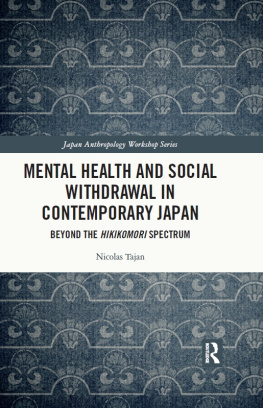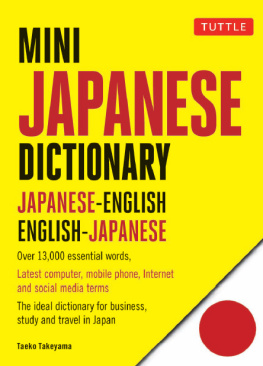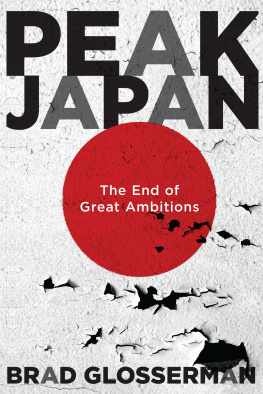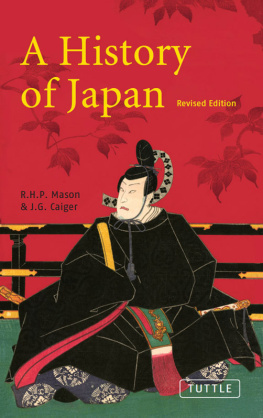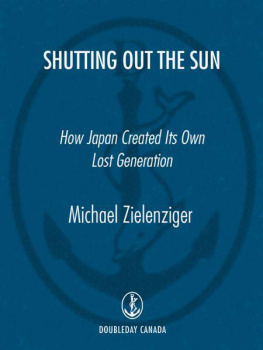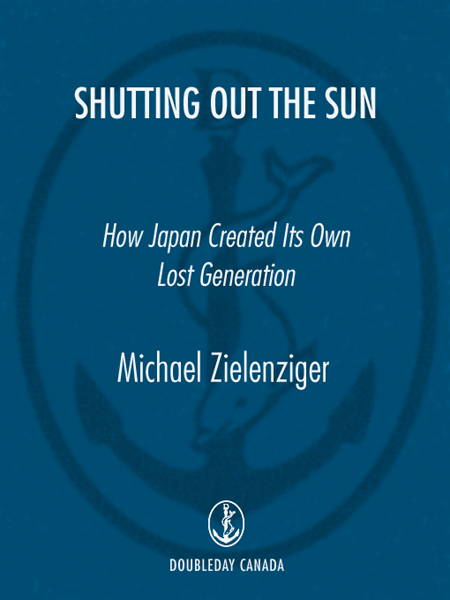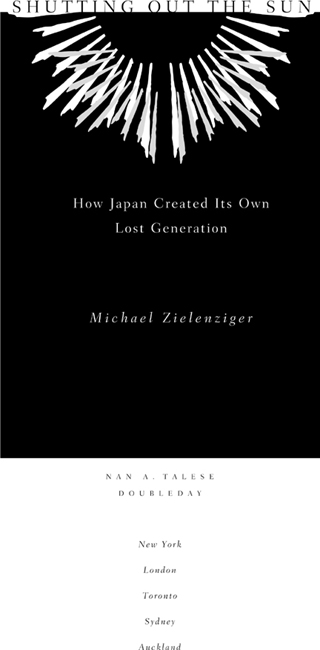To outsiders, Japan often appears as a murky, mysterious, and insular society that, over its many centuries, has proven exceptionally difficult to pierce. One of the missions of this book is to make Japan's contemporary plight more accessible to those who were not born and raised there. To that end, I have adopted certain conventions to ease the foreign reader's path along the journey.
First, I have reversed the order of Japanese names to make them less confounding to Western readers, with given names preceding surnames. Thus, the prime minister is referred to as Junichiro Koizumi, the psychiatrist as Hayao Kawainot the reverse as they normally would be rendered in Japanese. Both names are used on first reference whenever an individual is being properly identified.
However, I have also felt compelled to use pseudonyms to identify many of the individuals whose psychological conditions are addressed here, in order to protect them from the extreme social pressure Japanese can exert on those who refuse to conform to group standards and on those who choose to seek some form of psychological treatment. Hence, when a person is referred to by only a first name, i.e., Jun, or Hiro, this indicates that the person's name has been altered to protect his or her privacy.
It is important for readers to recognize, however, that the use of such pseudonyms does not alter the essential nature of the research and reporting this book contains. This is a work of nonfiction, a book composed entirely from real accounts. Though I have chosen to protect the identity of many people quoted herein, there are no composite characters or fictional descriptions contained within these pages. Though at times I have chosen to make the Japanese conversations a bit more colloquial, they represent complete and accurate descriptions of my interactions with these Japanese.
Without being able to assure many of my Japanese contacts that their true identities would be concealed and protected, I had little hope of being able to accurately convey their stories, or, in turn, their nation's fragile state.
Introduction
AN ADJUSTMENT DISORDER
On a rainy June morning in 1993, Masako Owada, a twenty-nine-year-old Harvard graduate, trade negotiator, and diplomat's daughter, awoke at 4 A.M. in her parents' suburban Tokyo home to be trundled off by secretive emissaries from the Imperial Household Agency and purified with sacred waters. She then was bound inside a multihued, seven-layered silk kimono dominated by greens and oranges and that weighed nearly thirty pounds and, under the exacting direction of a phalanx of assistants, shuffled noiselessly into an austere cedar-wood temple within the shrouded grounds of Tokyo's Imperial Palace to take part in a mystical Shinto ritual.
As millions of her countrymen and women watched on their high-definition televisions, Masako and Japan's Crown Prince Naruhito sipped sak from separate cups, bowed to the Sun Goddess and then to each other, and left the shrine separately with their respective retainers, their wedding now officially sealed. Not once during the austere fifteen-minute ceremony did the newlyweds touch or kiss. The stillness was broken only when the prince offered a brief prayer in an archaic form of Japanese few of his countrymen could understand. Later, the newlyweds were paraded through the streets in a white Rolls-Royce convertible to accept the cheers of a nation brimming with joy.
Eleven years later, in the spring of 2004, the Imperial Household Agency acknowledged that the crown princessnow forty, the mother of a young daughter, and mysteriously absent from public viewwas suffering from an adjustment disorder whose symptoms included sleeplessness and anxiety. She would, the agency advised, be kept out of sight indefinitely while undergoing unspecified medical treatment.
* * *
The disclosure that the pressures of palace confinement had seriously unnerved the princess staggered her nation, and not simply because of the personal tragedy weighing on such a sympathetic and widely venerated figure. Masako was considered one of Japan's very best and brightest. A former top diplomat in the Foreign Ministry, she offeredwith her cosmopolitan bearing and extraordinary international experiencethe promise that her charisma and influence, as well as her striking good looks, might transform Japan's insular and hidebound government and soften the distant, forbidding image of the Imperial Family. She held the potential, many felt, to shake up the entire Japanese system from above.
Her setbacks, however, also signify something deeper and more widely tragic. Sixty years after the end of World War Two, contemporary Japan is at peace, but everyone who lives there knows something is wrong.During three exhilarating decades of economic triumph Japan exercised its own unique brand of government-guided capitalism and seemed destined to outmuscle the United States, redraw the map of global influence, and take its place as the world's next superpower. Yet today its people remain afflicted with a habit of gloom, disappointment, and chronic underachievement. Like its crown princess, the nation and its young people seem to be teetering on the edge of a nervous breakdown.
* * *
Japan is a complex and enigmatic nation, dignified by a culture far more ancient than our own. It is a place where the traffic on the streets and the type in the newspapers flow from right to left; the opposite of white is not black, but red; and a can of hot coffee comes from a vending machine that bows graciously as it delivers it. Japan also embodies a unique civilization, one that rocketed into the modern world without acquiring the same values, norms, and modes of thinking most inhabitants of advanced and prosperous nations today associate with modernity.
For two hundred and fifty years, until pried open by U.S. Commander Matthew Calbraith Perry and his four heavily armed black ships of evil in 1853, Japan had existed as a sakoku, or closed country, which burned the vessels of any merchants who mistakenly sailed into its waters and killed any countrymen who strayed offshore. Perry sought to open Japan for trade and commerce, but the Japanese were astonished, frightened, and ultimately impressed by the wondrous machines these uninvited gatecrashers brought to their shores: a sewing machine, a telegraph, and a steam-powered quarter-gauge model railroad the intruders set up to run along the beach, a contraption that so beguiled the samurai warriors, they were soon clambering aboard for a spin.
Japan rushed to modernize quickly, determined that its people would never be forced to grovel before Western invaders, and set out to guide the modernization of greater Asia, a path that would ultimately lead to colonization and war. In its rapid transition from rice field to factory, Japan's leaders sought to maintain a strong government at the center of its economic life to restrain unbridled competition and to control scarce resources, including capital. By maintaining its tribal uniqueness and asserting group-enforced social harmony, Japan also hoped to avert the invidious consequences of industrializationespecially the gap between rich and poor of which Karl Marx had warned, a gulf starkly evident in most Western capitalist societies.
After the horror of the atomic bombings that ended World War Two, Japan's economy and infrastructure were a shambles, and this small island nation found itself starting up anew. Yet, under the sheltering umbrella of the United States, which furnished military protection and opened its consumer markets to Japanese imports, the nation staged a remarkable recovery, one in which the corporate world, the government bureaucracy, and the nation's political leaders evenly meshed their communal goals to focus on a single goalnational prosperity. Never in modern times had a society so successfully achieved such an aim. The government determined which industries to encourage and which technologies to invest in, and manipulated finances to keep corporate borrowing costs low. Hierarchy, consensus, and obedience ruled the corporate world, together forging an ideal of group harmony. With skillful planning, high savings, and hard labor, Japan soon became a leading steelmaker, car producer, and shipbuilder in its quest to catch up. In the process, children were swept along from grade school to high school and then placed into jobs they kept for life. In so many important respects, Japan's seemed the ideal system for the industrial age.


